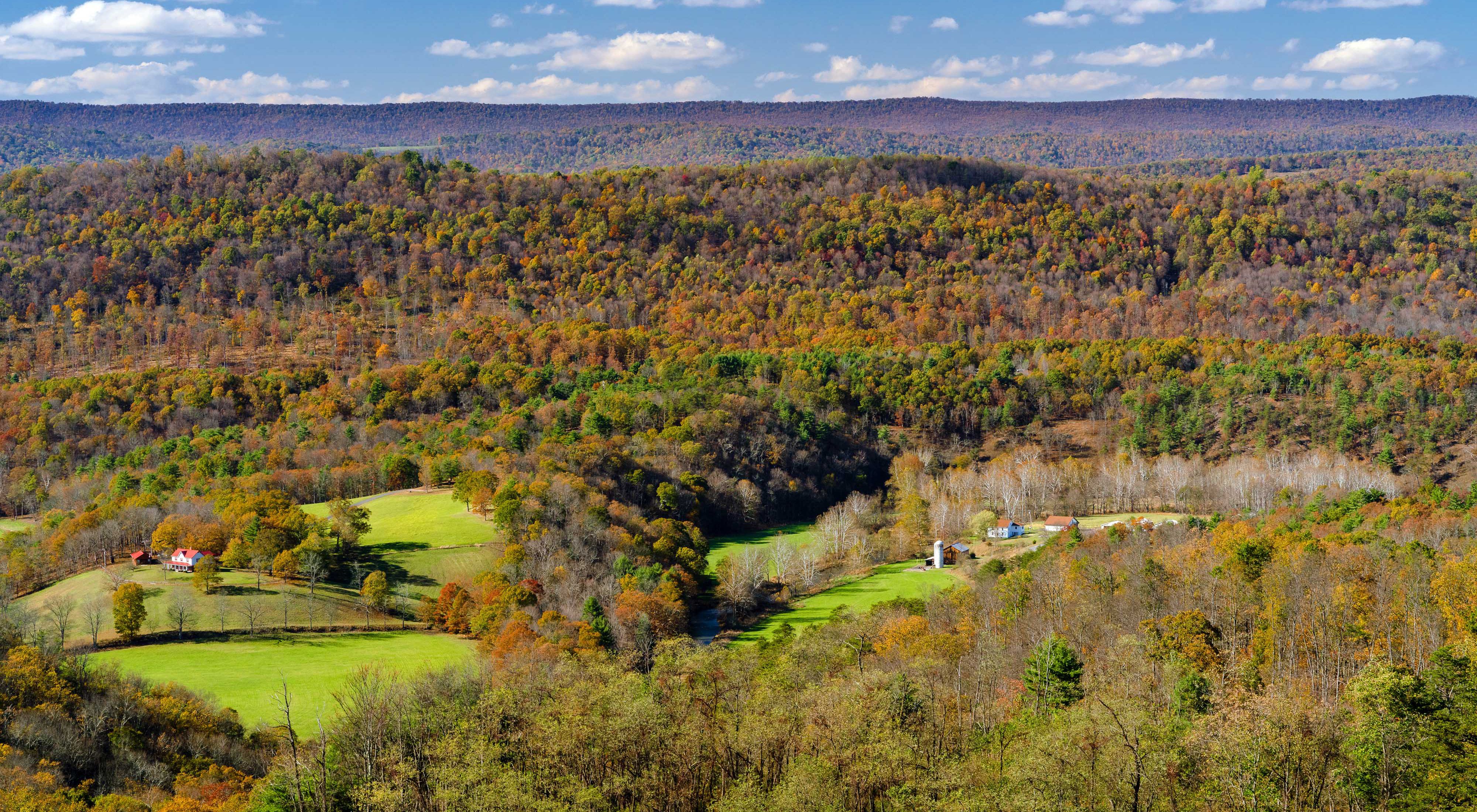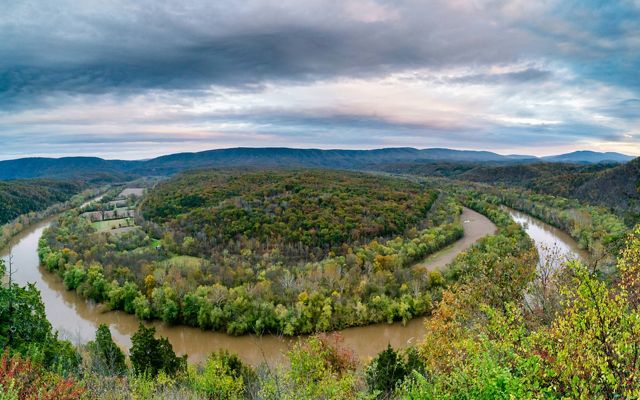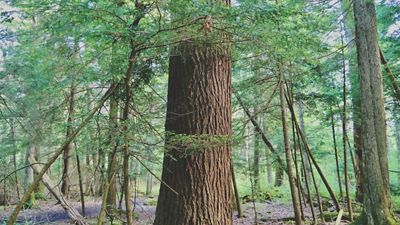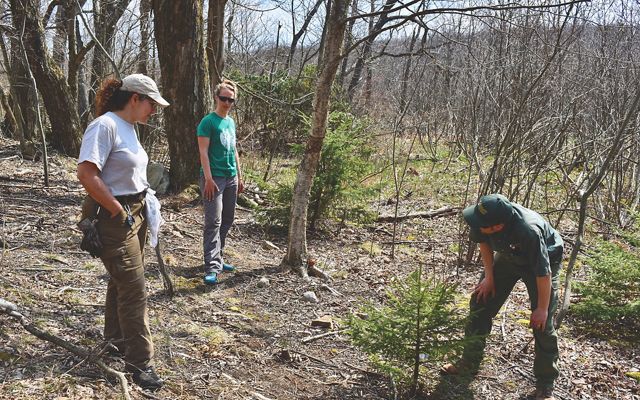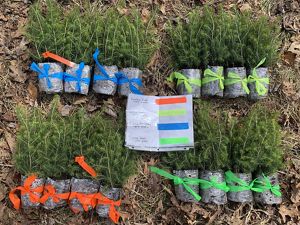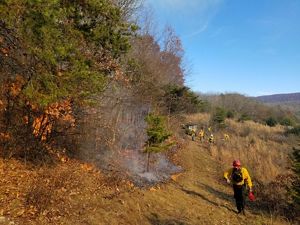Restoring Appalachian Forests
Conserving and strengthening our piece of the Appalachians—a critical migratory corridor for mammals, birds and amphibians.
Appalachian forests encompass a diversity of life virtually unrivaled in the temperate regions of the globe. As the climate changes and species move, we need even more from these forests.
Every seedling we plant, every acre we burn and every tree we measure is all part of a strategy to not only restore healthy forests, but also to serve as a model for land managers across the Appalachians. The Nature Conservancy in Western Maryland is restoring forests to safeguard their health and ensure their resilience to changing conditions.
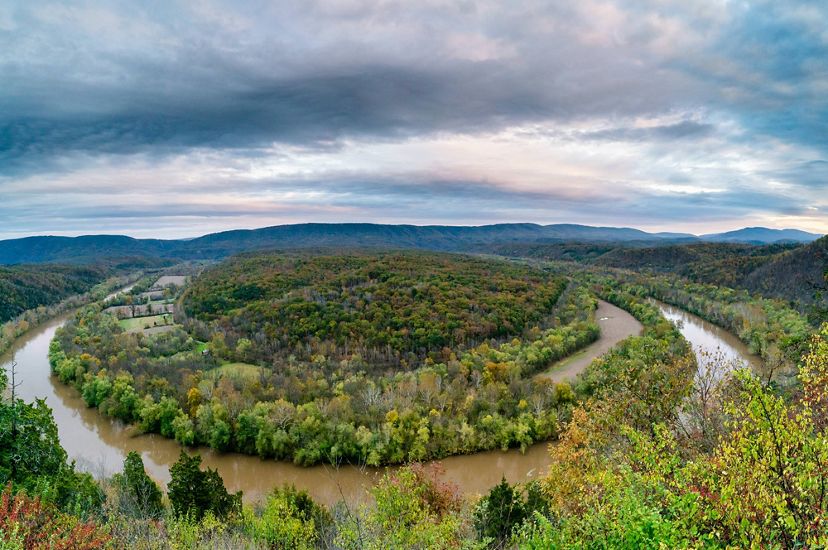
The Central Appalachians are the water tower for the mid-Atlantic. These mountain forests naturally filter and protect the headwaters of the Potomac River, the source of drinking water for millions of people in the D.C. metro area. These same forests are also one of the most biodiverse ecosystems in the world, providing habitat for more than 200 globally rare plants and animals.
Although Western Maryland occupies only a small slice of the Central Appalachians, it is an important one. The forests of Allegany and Garrett counties in Western Maryland are a critical migratory corridor for hundreds of plants and animals, especially as climate change shifts their ranges north.
Keeping our Western Maryland forests healthy and connected requires diverse skills, experiences and partnerships. We use science to better understand forest health and resilience. And we rely on decades of land management experience to lead the way on sustainable management.
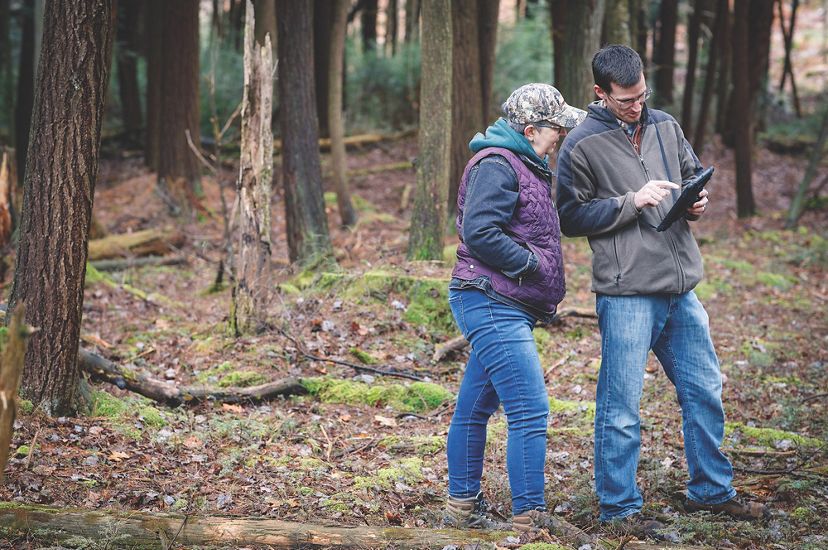
Helping Landowners: Family Forest Carbon Program
Over 60 percent of Appalachian forests are privately owned by individuals and families, which makes family forest landowners crucial conservation partners.
TNC and the American Forest Foundation have partnered to create the Family Forest Carbon Program (FFCP), an initiative that is a win-win for landowners, the environment and wildlife.
The FFCP provides incentive payments to landowners who implement sustainable forest management practices that sequester additional carbon on their properties. This revenue helps landowners with the upkeep and long-term management of their land, which in turn means a healthier and more robust landscape for wildlife habitat and biodiversity.
Thanks to generous support from Amazon, the FFCP launched with a pilot in Pennsylvania in 2020 and has now expanded to West Virginia and Maryland. In Maryland, landowners that own between 30 and 2,400 forested acres in certain areas of Garrett, Allegany, Washington, Frederick or Carroll counties are now eligible to participate.
In Western Maryland, TNC is connecting with landowners—in places where our science has identified the maximum co-benefits of carbon sequestration and habitat conservation for biodiversity—to educate and enroll interested landowners in the program.
Nature has an incredible capacity for absorbing and storing carbon. A recent TNC-led study estimated that improved forest management could mitigate 267 million metric tons of carbon dioxide equivalent (CO2e) per year in the United States. That is equivalent to taking 57 million cars off the road. The FFCP is an innovative new tool for harnessing the power of the nation’s forests for climate mitigation by incentivizing family forest landowners to store more carbon on their land.
Restoring Old-Growth Forests
Old-growth was once the predominant natural forest condition across the Eastern United States before European colonization on the continent. Today, however, old-growth forests are one of the rarest habitats in our region, constituting less than 1 percent of our forests.
Stepping into an old-growth forest can feel like traveling back in time. The most apparent feature are the old trees, which may be very large or show other signs of age like shaggy bark. There is structural diversity, which means trees of different species and age create a layered canopy. There are dead trees known as “snags” still standing, and there are dead trees on the ground that leave gaps in the canopy, allowing sunlight to reach the forest floor. These conditions create a habitat type that supports some of the most rare and charismatic wildlife species native to our region.
We can accelerate old-growth characteristics in even-aged forests through specific management techniques that replicate the natural processes that create old-growth conditions. In Maryland, we are partnering with the Forest Service and the Wildlife and Heritage Service to do just that. By creating two demonstration projects in Western Maryland—one on TNC’s Sideling Hill Creek Preserve and one in Savage River State Forest—our goal is to influence public and private forest landowners to adopt the best practices that will expand the amount of old growth forest across Appalachia.
As the climate changes, plants and animals will need to shift their ranges north and upslope to find suitable habitat. Maintaining a healthy and connected Appalachian corridor creates that opportunity. It is crucial that we keep our Western Maryland forests a healthy and connected link in the chain.
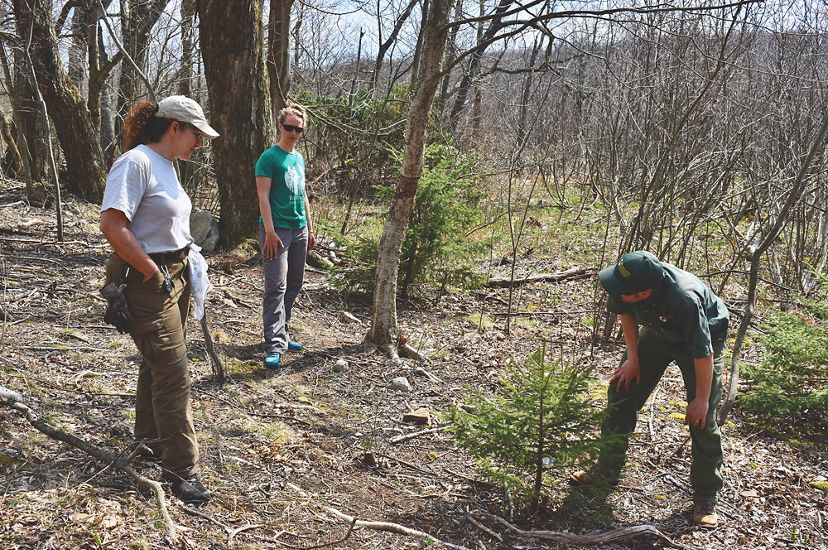
Restoring Red Spruce
Red spruce (Picea rubens) once covered thousands of acres in Western Maryland. Logging and subsequent wildfires at the turn of the 20th Century drastically reduced its range. It's estimated that in the Central Appalachians as much as 90% of the original red spruce forest is now gone.
But we're working to change that statistic—one seedling at a time.
We’ve been planting red spruce in Western Maryland nearly every year since 1996, and have begun re-visiting sites planted 10 years ago in order to introduce age diversity. Over the past 23 years, volunteers have planted more than 62,000 red spruce trees in the forests of Western Maryland.
Throughout the Appalachian Mountain range, mature red spruce forests are scarce and fragmented, creating red spruce “islands” that have been cut off from one another, resulting in poor genetic diversity. A recent partnership formed between TNC, academia and other partners aims to build genetic diversity into our restoration efforts.
For the past four years, a team led by the University of Vermont, in partnership with the University of Maryland Center for Environmental Science, the U.S. Forest Service and TNC, has been working to study and implement a project designed to improve the genetic diversity of Appalachian red spruce forests.
The project, sponsored by the Wildlife Conservation Society’s Climate Adaptation Fund, started with a focus on studying red spruce genetics, using those findings to grow more genetically diverse red spruce seedlings in nurseries, and now strategically planting those seedlings in areas that will reconnect the isolated communities of mature red spruce.
In the spring of 2021, this project touched down in Western Maryland, where TNC staff, partners and contractors planted more than 10,000 genetically diverse red spruce seedlings on TNC’s Finzel Swamp Preserve and Cranesville Swamp Preserve. These sites are now part of the larger initiative and will be continually monitored and studied in order to inform red spruce restoration in the future.
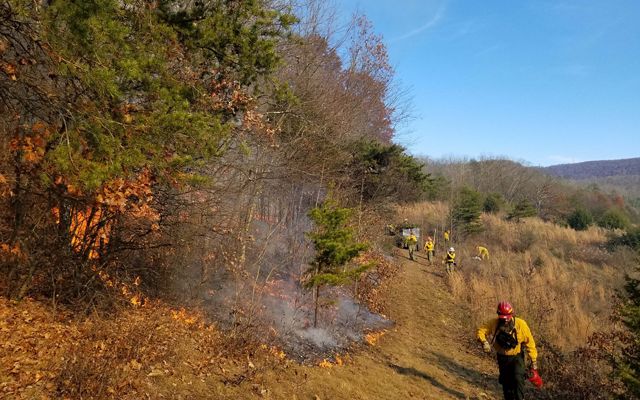
Returning Fire to the Landscape
One of the most reliable ways to boost forest health is by reintroducing fire.
The benefits that fire can bring to a landscape are remarkably varied. Many species of plants and trees have evolved to be fire-adapted, and may not grow or disperse their seeds until after a forest has burned.
In 2020, we hit a major milestone in our resilient forests program: TNC and partners conducted controlled burns on more than 500 acres of Central Appalachian forests in Western Maryland. As we celebrate our 30th anniversary of conducting controlled burns, we are now leveraging that expertise and trust as the first step toward an ambitious goal of returning the natural process of fire to the Central Appalachians at a landscape scale.
Contact
Donnelle Keech
Resilient Forests Program Director
Email: dkeech@tnc.org
-
Healthy Forests Program Fact Sheet
Nature is built to adapt. Our role is to provide the time and space these forests and wildlife need to adapt.
DOWNLOAD
We Can’t Save Nature Without You
Sign up to receive monthly conservation news and updates from Maryland/DC. Get a preview of Maryland/DC's Nature News email.

